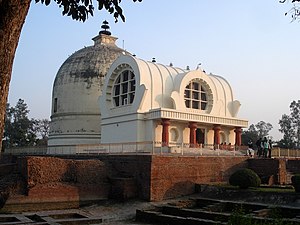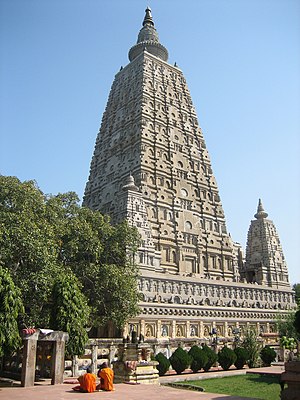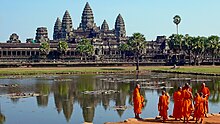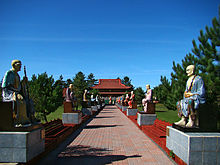Buddha’s Birthday
List of Buddhist temples
from Analytic Insight Net - Hi Tech Radio Free Animation Clipart Online
Tipiṭaka Research and Practice University and related NEWS through
http://sarvajan.ambedkar.org in 105 CLASSICAL LANGUAGES
Jāla-Abaddha Paripanti Tipiṭaka Anvesanā ca Paricaya Nikhilavijjālaya
ca ñātibhūta Pavatti Nissāya http://sarvajan.ambedkar.org anto 105
Seṭṭhaganthāyatta Bhāsā
an Online GOOD NEWS CHANNEL FOR WELFARE, HAPPINESS AND PEACE FOR ALL
SOCIETIES Catering to more than 3000 Emails: 200 WhatsApp, Facebook and
Twitter.
the most Positive Energy of informative and research oriented site
propagating the teachings of the Awakened One with Awareness the Buddha
and on Techno-Politico-Socio Transformation and Economic Emancipation
Movement followed by millions of people all over the world.
exact translation as a lesson of this University in one’s mother tongue
to this Google Translation and propagation entitles to become a Stream
Enterer (Sottapanna) and to attain Eternal Bliss as a Final Goal.
Button Plant Green Butterfly

Buddha’s Birthday

Buddha’s Birthday is a holiday traditionally celebrated in most of East Asia to commemorate the birth of the Prince Siddhartha Gautama, later the Gautama Buddha and founder of Buddhism. It is also celebrated in South and Southeast Asia as Vesak which also acknowledges the enlightenment and death of the Buddha. According to the Theravada Tripitaka scriptures (from Pali, meaning “three baskets”), Gautama was born in Lumbini in modern-day Nepal, in the year 563 B.C., according to the Nepalese Account, and raised in Kapilavastu.[2][3] At the age of thirty five, he attained enlightenment (nirvana) underneath a Bodhi tree at Bodhgaya (modern day India). He delivered his first sermon at Sarnath, India. At the age of eighty, He died at Kushinagar, India.[4]
The exact date of Buddha’s Birthday is based on the Asian lunisolar calendars.
The date for the celebration of Buddha’s Birthday varies from year to
year in the Western Gregorian calendar, but usually falls in April or
May. In leap years it may be celebrated in June.
The exact date of Buddha’s Birthday is based on the Asian lunisolar calendars and is primarily celebrated in Baisakh month of the Buddhist calendar and the Bikram Sambat Hindu calendar, and hence it is also called Vesak. In modern-day India and Nepal, where the Historical Buddha lived, it is celebrated on the full moon day of the Vaisakha
month of the Buddhist calendar. In Theravada countries following the
Buddhist calendar, it falls on a full moon Uposatha day, typically in
the 5th or 6th lunar month. In China and Korea, it is celebrated on the
eighth day of the fourth month in the Chinese lunar calendar. The date
varies from year to year in the Western Gregorian calendar, but usually
falls in April or May. In leap years it may be celebrated in June. In
Tibet, it falls on the 7th day of the fourth month of the Tibetan
calendar (in May).
In South Asian and Southeast Asian countries as well as Mongolia, Buddha’s birthday is celebrated on the full moon day of the Vaisakha month of the Buddhist calendar and the Hindu calendar,
which usually falls in April or May month of the Western Gregorian
calendar. The festival is known as Buddha Purnima, as Purnima means full
moon day in Sanskrit. It is also called is Buddha Jayanti, with Jayanti
meaning birthday in Sanskrit Language.
The corresponding Western Gregorian calendar dates varies from year to year:
- 2017: May 10
- 2018:
April 29 (Sri Lanka, Cambodia, Myanmar, Bangladesh), April 30 (Nepal,
India), May 29 (Singapore, Thailand, Malaysia and Indonesia)[5] - 2019: May 19
In many East Asian countries Buddha’s Birth is celebrated on the 8th day of the 4th month in the Chinese lunar calendar (in Japan since 1873 on April 8 of the Gregorian calendar), and the day is an official holiday in Hong Kong, Macau and South Korea. The date falls from the end of April to the end of May in the Gregorian calendar.
The primarily solar Gregorian calendar date varies from year to year:
- 2017: May 3
- 2018: May 22
- 2019: May 12
- 2020: April 30
In 1999 the Taiwanese government set Buddha’s birthday as the second Sunday of May, the same date as Mother’s Day.[6][7]
JapanAs a result of the Meiji Restoration,
Japan adopted the Gregorian calendar in lieu of the Chinese lunar
calendar in 1873. However, it took approximately until 1945, the end of World War II,
for religious festivities to adopt the new calendar. In most Japanese
temples, Buddha’s birth is now celebrated on the Gregorian calendar date
April 8; only a few (mainly in Okinawa) celebrate it on the orthodox
Chinese calendar date of the eighth day of the fourth lunar month.
Bangladesh
In
Bangladesh the event is called বুদ্ধ পূর্ণিমা or Buddho Purnima. On the
day of proceeding Purnima Buddhist monks and priests decorate temple in
colourful decorations and candles. On the day of the festival the
President and Prime Minister deliver speeches about the history and
importance of Buddhism and religious harmony in the country. From noon
onwards large fairs are held in and around temples and viharas
selling bangles, food (largely vegetarian), clothes, toys and
conducting performances of Buddha’s life, Buddhist music teaching about
the Dharma and the 5 precepts. Later on Buddhists attend a congression
inside the monastery where the chief monk would deliver a speech
discussing the Buddha and the 3 jewels and about living the ideal life
after which a prayer to the buddha would be conducted and people would
then light candles and recite the three jewels and 5 precepts.[8][9]
In Cambodia, Buddha’s Birthday is celebrated as Visak Bochea and is a public holiday
where monks around the country carry flags, lotus flowers, incense and
candles to acknowledge Vesak. People also take part in alms giving to
the monks.[10]
In China, celebrations often occur in Buddhist temples where people light incense and bring food offerings for the monks.[11] In Hong Kong, Buddha’s birthday is a public holiday.
Lanterns are lit to symbolise the Buddha’s enlightenment and many
people visit the temple to pay their respects. The bathing of the Buddha
is a major feature of Buddha’s birthday celebrations in the city.[12] The festival is also a public holiday in Macau.[13]
India
is the land where the Buddha attained enlightenment (nirvana) at
Bodhgaya and established Buddhism. Buddha spent majority of his life in
what is now modern day India. Some of the holiest sites associated with
Buddha’s life include Bodhgaya (place of enlightenment), Sarnath (site of first sermon), Sravasti and Rajgir (site where Buddha spent the greater part of his monastic life and delivered majority of his discourses), and Kushinagar (site where Buddha attained Parinirvana and passed away)[14][15] Under Emperor Ashoka, Buddhism spread from India to other nations.[4] Buddha Purnima or Buddha Jayanthi in South India or Tathagata is a public holiday in India.The public holiday for Buddha purnima in India was initiated by Bhimrao Ramji Ambedkar when he was the minister of social justice [16] It is celebrated especially in Sikkim, Ladakh, Arunachal Pradesh, Bodh Gaya, various parts of North Bengal such as Kalimpong, Darjeeling, and Kurseong, and Maharashtra (where 73% of total Indian Buddhists live) and other parts of India as per Indian calendar. Buddhists go to common Viharas to observe a rather longer-than-usual, full-length Buddhist sutra, akin to a service. The dress code is pure white. Non-vegetarian food is normally avoided. Kheer,
a sweet rice porridge is commonly served to recall the story of Sujata,
a maiden who, in Gautama Buddha’s life, offered the Buddha a bowl of
milk porridge.
Informally called “Buddha’s Birthday”, it actually commemorates the
birth, enlightenment (nirvāna), and death (Parinirvāna) of Gautama
Buddha in the Theravada tradition. Tibetans in exile remember Buddha’s
birthday on the 7th day of the Saga Dawa month (fourth month of the
Tibetan calendar), which culminates with Buddha’s parinirvana
celebrations on the full moon day.
It is said that the Buddha originally followed the way of asceticism
to attain enlightenment sooner, as was thought by many at that time. He
sat for a prolonged time with inadequate food and water, which caused
his body to shrivel so as to be indistinguishable from the bark of the
tree that he was sitting under. Seeing the weak Siddhartha Gautama, a
woman named Sujata placed a bowl of “Kheer” in front of him as an
offering.[17] Realizing that without food one can do
nothing, the Buddha refrained from harming his own body. Thereafter, he
would go on to attain nirvana.
In Indonesia, Buddha’s Birthday is celebrated as Waisak and is a public holiday. A large procession beginning in Mendut in Java ends at Borobudur – the largest Buddhist temple in the world.[18][19]
Japan

List of Buddhist temples



This is a list of Buddhist temples, monasteries, stupas, and pagodas for which there are Wikipedia articles, sorted by location.
AustraliaAustralian Capital Territory- Mahamevnawa Buddhist Monastery (Sri Lankan)
Queensland
South Australia
Victoria
Western Australia
Bangladesh
- Buddha Dhatu Jadi
- Somapura Mahavihara
- Shita Coat Bihar
- Jagaddala Mahavihara
- Shalban Vihara
- Vasu Vihara
- Kurjey Lhakhang - one of Bhutan’s most sacred temples - image of Guru Rinopche enshrined in rock.
- Rinpung Dzong
- Paro Taktsang (Tiger’s Nest) - perched on a 1,200 meter cliff, this is one of Bhutan’s most spectacular monasteries.
- Punakha Dzong - constructed by Zhabdrung Ngawang Namgyal in 1637-38 it is the head monastery of the Southern Drukpa Kagyu school.
Thimphu
Cambodia
Angkor
Kampong Thom
Phnom Penh
- Wat Botum
- Wat Ounalom
- Wat Moha Montrey
- Wat Phnom
- Wat Preah Keo (Silver Pagoda)
CanadaBritish Columbia
- International Buddhist Temple, Richmond
- Ling Yen Mountain Temple
- Thrangu Monastery (Richmond, British Columbia)
Ontario
- Fo Guang Shan Temple, Toronto Toronto Branch, Mississauga
- Mahamevnawa Buddhist Monastery (Theravada)
- Toronto Zen Centre
- Zen Centre of Ottawa
- Mahadhammika Temple, Toronto (Theravada)



Beijing
- Big Bell Temple (Juesheng Temple)
- Fayuan Temple
- Guanghua Temple
- Guangji Temple
- Jietai Temple
- Miaoying Temple
- Tanzhe Temple
- Temple of Azure Clouds
- Tianning Temple
- Wanshou Temple
- Yonghe Temple
- Yunju Temple
- Zhenjue Temple
- Zhihua Temple
- Cao’an (originally, a Manichaean temple)
- Guanghua Temple
- Kaiyuan Temple
- Wanfu Temple
- Guangxiao Temple (”Temple of Bright Filial Piety”)
- Hoi Tong Temple (”Ocean Banner Temple”)
- Nanhua Temple
- Temple of the Six Banyan Trees
Hebei
Henan
Hohhot
Hubei
- Guiyuan Temple in Hanyang
- Xingfu Temple destroyed; formerly in Wuchang
- Chi Lin Nunnery
- Kwan Kung Pavilion
- Po Lin Monastery
- Tsing Shan Monastery
- Tsz Shan Monastery
- Yuen Yuen Institute
- Hanshan Temple
- Huqiu Tower
- Jiming Temple
- Linggu Temple
- Qixia Temple
- Tianning Temple (天宁宝塔), Changzhou, the tallest pagoda in the world. Height: 153.8 metres (505 ft).
Ningxia
Quanzhou
Shaanxi
Shandong
Shanghai
Shanxi
Sichuan












